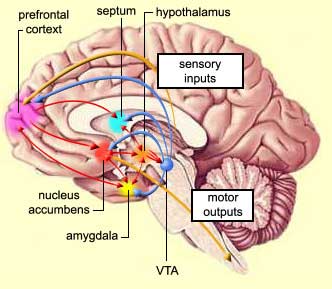 Brain Overview
Brain Overview
Neuroscientists describe the brain as a “team of rivals.” It’s made up of multiple structures and systems that vie with one another for dominance. For the “team of rivals” to operate properly, it must work in balance, one against another.
The two systems most important to understanding addiction are the brain’s rational and emotional networks. Drugs work on the emotional systems, while rationality competes to warn of the consequences of drug use.
Addiction can be described as a pathologically imbalanced brain in which the emotional dominates the rational. Addicts over-stress the short-term emotional benefits of drug use, under-valuing the longer-term rational consequences. That’s one of the key reasons addicts continue to use drugs despite worsening repercussions; why addiction is a disease of fundamental irrationality.
To explain, we start with a basic principle that governs brain function: homeostasis, or balance. Drug abuse significantly changes the balance of dopamine, the primary neurotransmitter that operates in the Limbic “reward” System, and in so doing alters the balance in favor of the emotional over the rational.
The brain consists of about 100 billion neurons. Groups of neurons are organized into multiple sub-structures with specialized functions. We describe neurons and the neurotransmitters they use to communicate with one another.
We summarize how addictive drugs manipulate neurons in the brain’s reward center, the Limbic System, to produce a high, that is, why drugs are so gratifying. And, since addiction is viewed by scientists as a form of toxic learning and memory-formation, we provide some background on how memories are formed, and how drug abuse impacts memory and motivation.
The articles in the Brain Overview series are:
 Brain Overview
Brain Overview